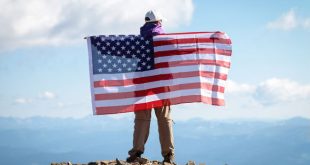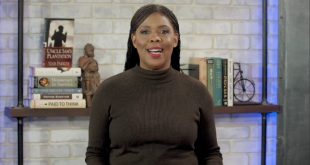BCN editor: An excerpt of a new education report from the Center for Urban Renewal and Education:
Background
Education choice, also called “education freedom,” is the idea that parents should be able to choose where to send their children to school. The call for education choice impacts approximately 48.1 million students enrolled in K-12 public schools across America and their parents.
The U.S. Department of Education reports that K-12 public school enrollment dropped by more than 2 percent in fall 2020 1 and other reports cite post-pandemic increases in private school enrollment and homeschooling. Nonetheless, the overwhelming majority of America’s children still attend a taxpayer-funded government school to which they were assigned because of where they happen to live.
The Department of Education estimated that $709 billion would be spent on public K-12 education in the United States during the 2020–2021 school year (not accounting for funding changes as a result of the coronavirus pandemic). This amounted to a projected expenditure of $14,000 per student, with the federal government providing about $40 billion of the total funding.
Title I (one) of the Elementary and Secondary Education Act (ESEA) passed in 1965 provides federal funds to school districts that are earmarked to help low-income students. In the 2020–2021 school year, about $16.3 billion in federal funds went to school districts for this purpose. A small portion of Title I funds are shared with private schools, but some public school districts are not entirely cooperative in distributing those funds.
Responding to a complaint filed by the Catholic Archdiocese of Los Angeles in September 2019, the California Department of Education issued an “investigation report” on June 25, 2021, charging the Los Angeles Unified School District (LAUSD) with “egregious” violations of federal law by withholding millions of dollars in Title I funds from archdiocesan schools.2
This report finds that K-12 education in the United States is far from what it should or could be. As a nation, we are underperforming by international standards. CURE is also concerned that low-income Americans are particularly underserved by our nation’s approach to education.
…
COVID Shifting the Landscape on School Choice
As teachers’ unions opposed the opening of schools for in-person learning during the COVID-19 pandemic, many parents sought alternatives through private schools and homeschooling.
The U.S. Census Bureau’s Household Pulse Survey found that in late April/early May 2020, about 5.4 percent of U.S. households with school-aged children reported homeschooling. By October 2020, that number more than doubled to 11.1 percent. The proportion of black families homeschooling increased by nearly five times, from 3.3 percent to 16.1 percent.17
The Associated Press (AP) interviewed some parents to find out why they had switched from public schools to homeschooling. They reported:
“The parents in one of those households, Arlena and Robert Brown of Austin, Texas, had three children in elementary school when the pandemic took hold. After experimenting with virtual learning, the couple opted to try homeschooling with a Catholic-oriented curriculum provided by Seton Home Study School, which serves about 16,000 students nationwide….
‘I didn’t want my kids to become a statistic and not meet their full potential,’ said Robert Brown, a former teacher who now does consulting. ‘And we wanted them to have very solid understanding of their faith….’
Charmaine Williams, who lives in the St. Louis suburb of Baldwin, also is using the National Black Home Educators curriculum as she homeschools her 10-year-old son, Justin, and 6-year-old daughter, Janel.
Williams said she and her husband tried two previous stints of homeschooling for Justin after school officials complained about his behavior. Now—with the new curriculum and an accompanying support network—they feel more confident about choosing it as a long-term option.
‘At school, children have to follow a certain pattern, and there’s bullying, belittling—compared to being home where they’re free to be themselves,’ Williams said.
‘There’s no turning back for us now,’ she added. ‘The pandemic has been a blessing—an opportunity to take ownership of our children’s education.’
Joyce Burges, co-founder and program director of National Black Home Educators, said the 21-year-old organization had about 5,000 members before the pandemic and now has more than 35,000.”18
According to Education Week magazine, based on a nationally representative survey of parents by the EdWeek Research Center, nine percent of parents who weren’t homeschooling their children during the 2019–2020 school year said they planned to do so during the 2020–2021 school year. Education Week further reports that homeschooling in response to the pandemic “is driving enrollment declines in schools and districts across the country, according to a majority of principals and superintendents surveyed by the EdWeek Research Center. Fifty-eight percent in a mid-October [2020] survey listed home schooling as being a major contributor to enrollment declines caused by COVID-19—more than any other single reason, such as losing students to charter schools, private schools, or ’pandemic pods‘ in which families band together to hire instructors who teach their children at home.”
In North Carolina, Education Week found that “more than 10,000 new families filed notices of their intent to home school between the beginning of July and the end of August [2020], compared to just over 3,500 during the same time period last year.”
Wisconsin reported “a spike in parents and guardians filing with the state their intent to homeschool. For the previous two years, intent to home school forms were submitted for about 14,800 students between the beginning of July and mid-October. [In 2020] the number was just over 23,000.”
At the local level, Education Week cited the DeForest school district in suburban Madison, Wisconsin. While the number of students leaving the district was relatively small at the beginning of the 2020–2021 school year (about 50 out of nearly 4,000), the school district’s leader estimates that the number of new families enrolling in kindergarten compared to previous years dropped between 15 and 20 percent.19
…
Religious School Choice and the Courts
In a 5-4 decision (Espinoza v. Montana Department of Revenue) on June 30, 2020, the U.S. Supreme Court delivered a major victory for religious schools. The Court held that the Montana Constitution’s “no-aid” provision to a state program providing tuition assistance to parents who send their children to private schools discriminated against religious schools and the families whose children attend or hope to attend them in violation of the free exercise clause of the First Amendment.
29
On July 2, 2021, the U.S. Supreme Court announced that it will hear a case (Carson v. Makin) brought by families from Maine who want to access a state tuition program to send their children to religious schools.
A Maine Department of Education rule allows families who live in towns that don’t have public schools to receive public tuition dollars to send their children to the public or private school of their choice. However, that program excludes religious schools from eligibility.
The Institute for Justice, which represents the families, believes this is a “potentially landmark case” and says the state of Maine is “singling out religion—and only religion—for exclusion from its tuition assistance program.”
30
The Supreme Court’s decision in this Maine case is expected to be handed down in June 2022. The Institute for Justice says these families “seek to vindicate their right, once and for all, to select the best school for their children, whether the schools are public, private or religious.”31
Photo credit: Alliance for Excellent Education (Creative Commons) – Some rights reserved
Do you like this post? Sign up for more!
 CURE News and Clergy Blog News and Commentary for Christians
CURE News and Clergy Blog News and Commentary for Christians



